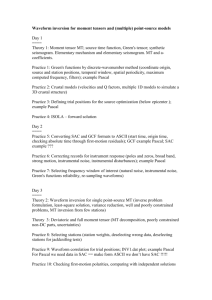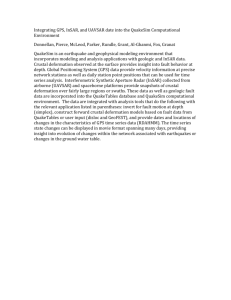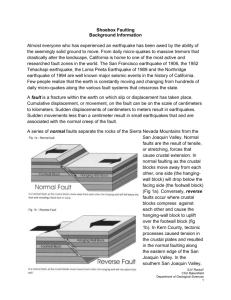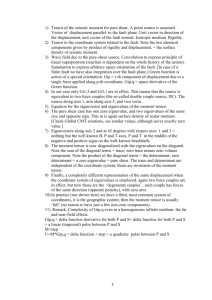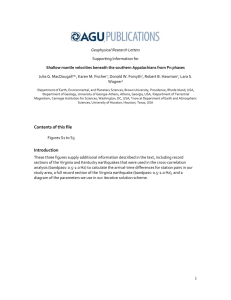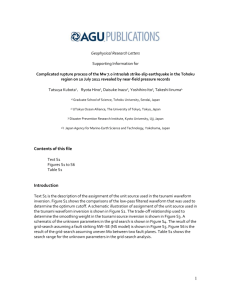ISOLA - Fortran and Matlab program package for seismic source
advertisement
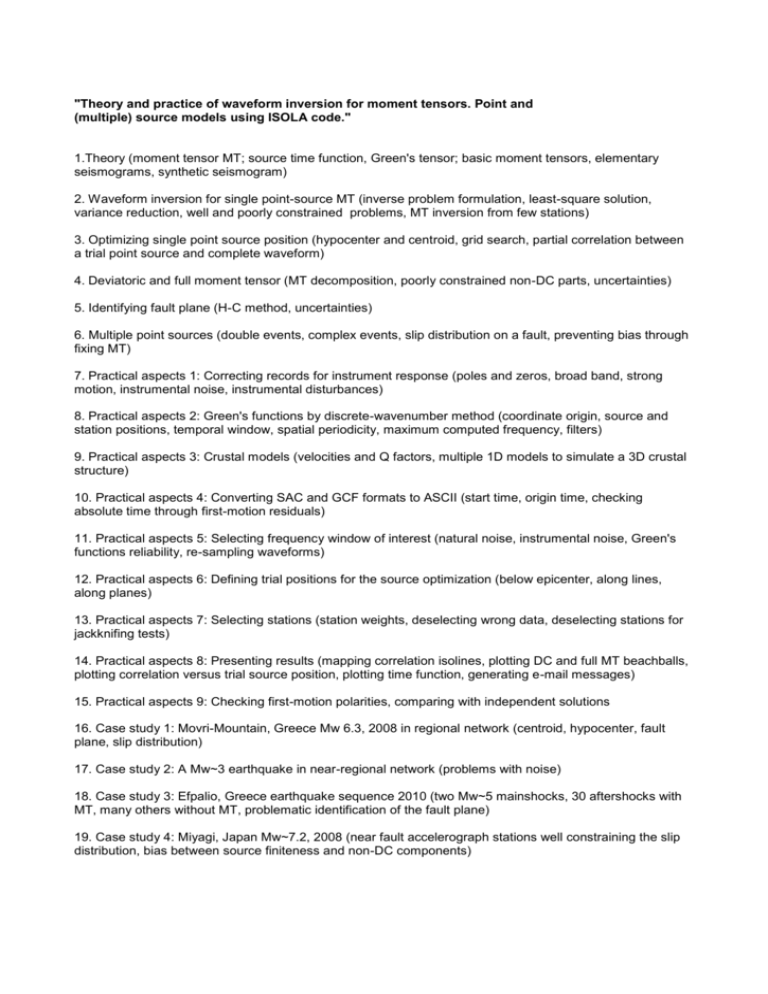
"Theory and practice of waveform inversion for moment tensors. Point and (multiple) source models using ISOLA code." 1.Theory (moment tensor MT; source time function, Green's tensor; basic moment tensors, elementary seismograms, synthetic seismogram) 2. Waveform inversion for single point-source MT (inverse problem formulation, least-square solution, variance reduction, well and poorly constrained problems, MT inversion from few stations) 3. Optimizing single point source position (hypocenter and centroid, grid search, partial correlation between a trial point source and complete waveform) 4. Deviatoric and full moment tensor (MT decomposition, poorly constrained non-DC parts, uncertainties) 5. Identifying fault plane (H-C method, uncertainties) 6. Multiple point sources (double events, complex events, slip distribution on a fault, preventing bias through fixing MT) 7. Practical aspects 1: Correcting records for instrument response (poles and zeros, broad band, strong motion, instrumental noise, instrumental disturbances) 8. Practical aspects 2: Green's functions by discrete-wavenumber method (coordinate origin, source and station positions, temporal window, spatial periodicity, maximum computed frequency, filters) 9. Practical aspects 3: Crustal models (velocities and Q factors, multiple 1D models to simulate a 3D crustal structure) 10. Practical aspects 4: Converting SAC and GCF formats to ASCII (start time, origin time, checking absolute time through first-motion residuals) 11. Practical aspects 5: Selecting frequency window of interest (natural noise, instrumental noise, Green's functions reliability, re-sampling waveforms) 12. Practical aspects 6: Defining trial positions for the source optimization (below epicenter, along lines, along planes) 13. Practical aspects 7: Selecting stations (station weights, deselecting wrong data, deselecting stations for jackknifing tests) 14. Practical aspects 8: Presenting results (mapping correlation isolines, plotting DC and full MT beachballs, plotting correlation versus trial source position, plotting time function, generating e-mail messages) 15. Practical aspects 9: Checking first-motion polarities, comparing with independent solutions 16. Case study 1: Movri-Mountain, Greece Mw 6.3, 2008 in regional network (centroid, hypocenter, fault plane, slip distribution) 17. Case study 2: A Mw~3 earthquake in near-regional network (problems with noise) 18. Case study 3: Efpalio, Greece earthquake sequence 2010 (two Mw~5 mainshocks, 30 aftershocks with MT, many others without MT, problematic identification of the fault plane) 19. Case study 4: Miyagi, Japan Mw~7.2, 2008 (near fault accelerograph stations well constraining the slip distribution, bias between source finiteness and non-DC components) 20. Training: Each participant inverts his/her own waveforms (get ready your waveforms, origin and start times, poles and zeros, crustal models, station coordinates, maybe also results of the hypocenter location, polarities, alternative solutions by other agencies). ??????? ISOLA as a tool usable also for the forward modeling !!!!!!!!!
